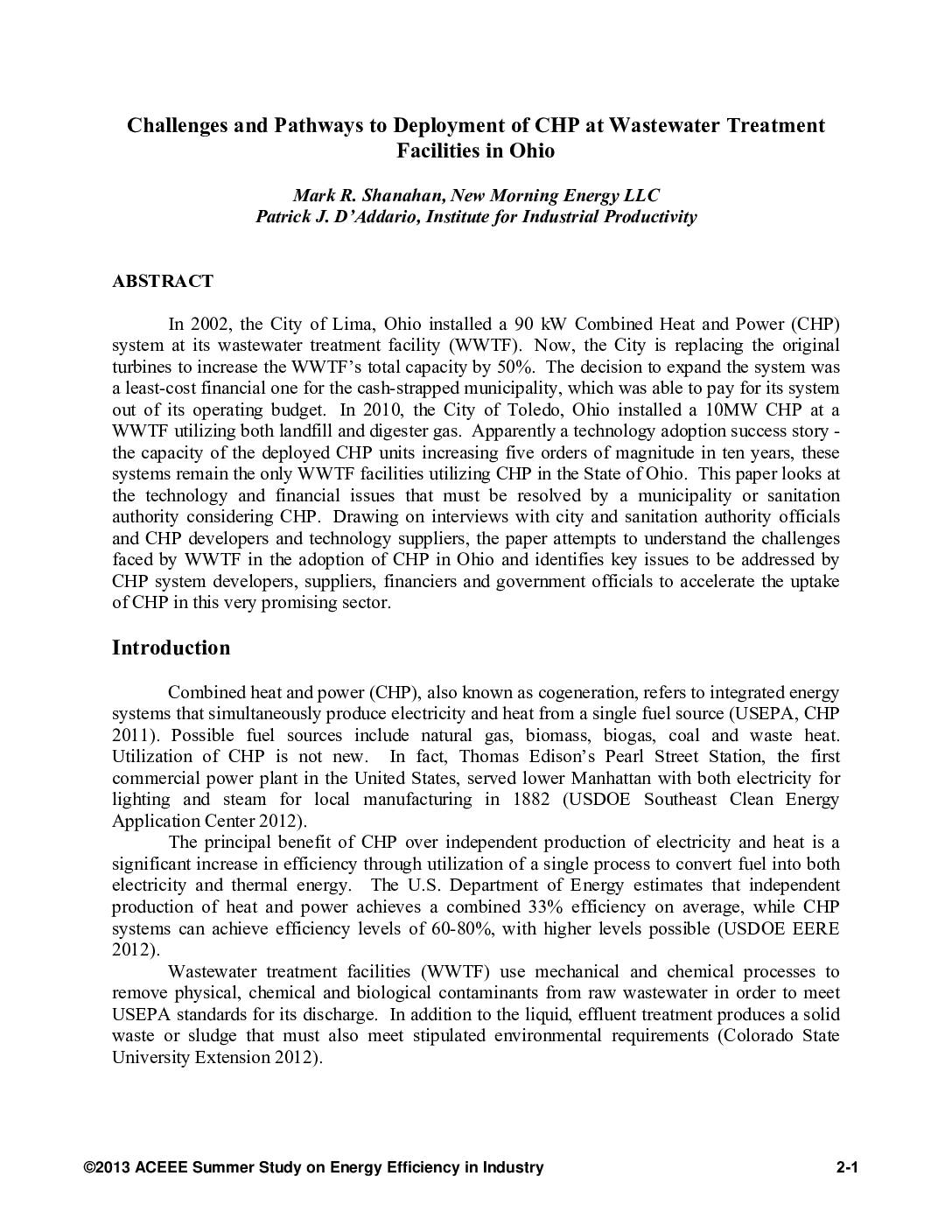In 2002, the City of Lima, Ohio installed a 90 kW Combined Heat and Power (CHP) system at its wastewater treatment facility (WWTF). Now, the City is replacing the original turbines to increase the WWTF’s total capacity by 50%. The decision to expand the system was a least-cost financial one for the cash-strapped municipality, which was able to pay for its system out of its operating budget. In 2010, the City of Toledo, Ohio installed a 10MW CHP at a WWTF utilizing both landfill and digester gas. Apparently a technology adoption success story – the capacity of the deployed CHP units increasing five orders of magnitude in ten years, these systems remain the only WWTF facilities utilizing CHP in the State of Ohio. This paper looks at the technology and financial issues that must be resolved by a municipality or sanitation authority considering CHP. Drawing on interviews with city and sanitation authority officials and CHP developers and technology suppliers, the paper attempts to understand the challenges faced by WWTF in the adoption of CHP in Ohio and identifies key issues to be addressed by CHP system developers, suppliers, financiers and government officials to accelerate the uptake of CHP in this very promising sector.
Link to resource Download sourceShare this

Sectors: Buildings, Cities, Cross cutting, Industry, Power sector, Renewables
Country / Region: Northern America, United States
Tags: cities, cogeneration, digester gas, domestic heating, energy, heating, paper productionKnowledge Object: Publication / Report
Published by: IIP
Publishing year: 2013
Author: Mark R. Shanahan, Patrick J. D’Addario
